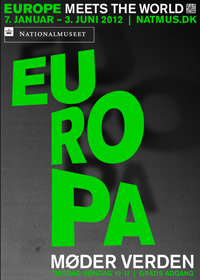FREE ENTRANCE FOR NEW LOUISIANA EXHIBITION NEXT THURSDAY
With their visual mastery, the works of Andreas Gursky insist on the vast, fascinating power of the image and stand as a modern proposal for what beauty may be.
In auctions the photographs of Andreas Gursky are the World's most expensive!
Next Thursday January 12 at 6 pm you have a unique chance of going to Louisiana for the opening of this exhibition free of charge AND hear the opening speach by executive director of Louisiana Poul Erik Tøjner.
More info
And on Friday January 13th you can enjoy the Friday lounge with DJ and co-founder of the electronica band
Kreidler Detlef Weinrich.
As the first international name ever to play at Louisiana Friday Lounge Detlef Weinreich will play tracks from his solo project Toulouse Low Trax, which he describes as a tone-cocktail of "Library, Soundtracks, Ethnic & Emotional".
This event is free to museum visitors (entrance fee necessary on this evening) and the museum café wil be serving Franziskaner Dunkel beer for this special occasion.
More info

EUROPE MEETS THE WORLD
GUIDED TOUR AT THE NATIONAL MUSEUM
SUNDAY JANUARY 22ND, 2012
"Europe meets the World" depicts the interaction - good and bad - between Europe and the rest of the World.
Buy your tickets here
Tickets are kr. 70 for 1 hour guided tour and a glass of sparkling wine afterwards.
Max. 25 people can join us for this event.
In the name of the Lord
"In nomine domini" (in the name of the Lord) is the inscription on the blade of a sword that is one of the items exhibited. The sword was probably made to be used in the Crusades and is a very good illustration of how,
for many centuries, Europeans met the surrounding world - not only during the Crusades, but also in the times that followed.
The major voyages of discovery from Portugal and Spain in particular put the world at Europe's feet. When they encountered new, foreign cultures in South America, for example, the Europeans' unshakeable religious faith,
mixed with their deep cynicism and lack of respect for the native Indians and their culture, enabled them to conquer and subject the rich kingdoms.
New knowledge and bustling trade
"Europe meets the World" is not just about history and war, conflict and suppression. The meeting with foreign cultures brought with it new knowledge and bustling trade. The exhibition begins with ancient Greece, which became Europe's gateway to the civilisations of the Middle East. At the outset, the interaction was mainly from east to west: for example, the Greeks' adoption of the Phoenician alphabet.
From ancient Greece, the exhibition moves on to the Roman Empire, which was the dominant power in Europe in the centuries after Christ's birth. Although the various peoples and cultures of the Roman provinces had to swear allegiance to the Emperor, local customs and traditions were not suppressed, which helped to stimulate the entire continent's cultural development. The first centuries after Christ's birth saw a major expansion of trade and a burgeoning globalisation process. People traded with each other throughout the Roman Empire. Moreover, ceramics and other Roman goods were carried to far more distant lands. From the Orient, caravans brought costly treasures such as spices and silks back to Europe. The exhibition leads the visitor towards contemporary Europe, the result of the continent's history and its encounters with the rest of the world.
The National Museum's own exhibits - including Heinrich Himmler's eye patch
Despite its international approach, the exhibition is based solely on the National Museum's own artefacts. These include the aforementioned sword, which was found at Søborg Castle, the seat of Danish archbishops. The Crusader
sword is a symbol of how Denmark is part of a continent that is changing constantly, ceaselessly influenced by the world around us.
The eye patch used by Heinrich Himmler to conceal his true identity after Germany's defeat in the Second World War is one of the items exhibited. "Europe meets the World" reveals why this particular item is part of the National Museum's collection.
